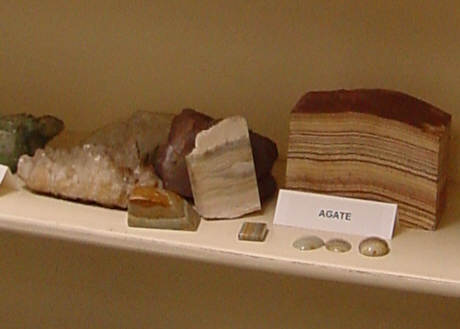Mineral and Rock Hall

Take a journey through the Rock Cycle and see how the elements combine to form some of the worlds most beautiful minerals. Compare the different Chemical Families that make up minerals. Compare igneous, sedimentary, and metamorphic rocks in this small but attractive hall. In the hall are tools made by early Ohlones (local native Americans) in a Tools of Early Humans display.
Chemical Families of Minerals
| element |
element |
element |
element |
element |
element |
element |
element |
|
native |
oxide |
sulfide |
sulfate |
carbonate |
borate |
silicate |
halide |
|
graphite |
hematite |
galena |
gypsum |
calcite |
borax
|
quartz |
fluorite |
Rock Cycle

The Rock Cycle is a way to conceptually understand the creation and destruction of igneous, sedimentary, and metamorphic rocks on and within the crust of the Earth. Rocks form in many environments.
Identification of rocks can be difficult for beginners. Many people try to match a rock sample with a picture. This rarely works, as the same type of rock can have a great variety of appearances. Geologists classify rocks using two basic features: mineral composition and texture (appearance).